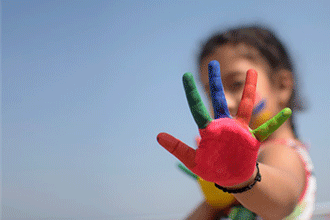[설산 최재은 칼럼]
경상남도 사천시 사남면 능화마을에서 시작하여 배방사지까지 이어지는 길을 고려 현종의 “부자 상봉 길”로 조성해 놓았다. 능화마을은 고려 현종의 아버지 왕욱(王郁)이 유배된 장소이다.
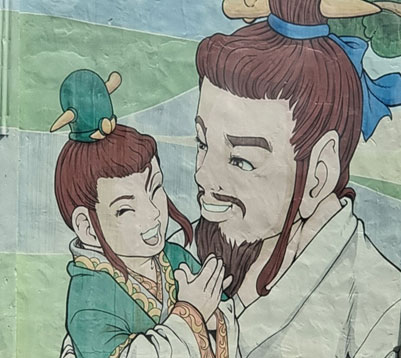
왕욱(王郁)은 고려태조 왕건의 여덟 번째 아들이다. 그런데 일곱째 아들 왕욱(王旭)의 딸이자 제5대 경종(景宗)의 미망인 헌정왕후와 사통하여 아들 순(詢)을 낳았다. 그러하니 왕순(王詢)은 사생아였다. 어머니 헌정왕후 황보씨는 아들을 낳고 바로 죽고 말았다. 아버지는 사통한 사실로 인하여 왕순이 태아나기도 전에 머나먼 사천 땅으로 유배를 왔던 것이다.
왕은 천진난만한 아이의 얼굴을 보고 차마 죽일 수 없어 아버지의 유배지인 사천의 배방사로 보냈다. 왕욱은 눈에 넣어도 안 아플 것 같은 아들을 보기 위해 능화마을에서 배방사까지 이십리가 넘는 길을 아침에 갔다가 저녁이면 돌아왔다. 그때 넘던 고개 마루를 돌아볼 고(顧) 아들 자(子) 봉우리 봉(峰)으로 하여 고자봉(顧子峰)이라 명했다.
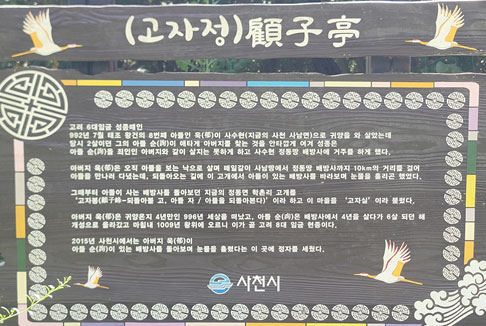
왕욱이 유배온 해가 992년이고 왕순이 태어난 것 또한 992년 이었다. 이후 왕욱은 중대한 결심을 한다. 귀룡동(歸龍洞)의 터가 왕이 날 명당자리임을 안 왕욱은 자신의 주검을 귀룡동에 묻어달라고 유언하고 자결한다. 그것도 엎어서 묻어 달라고 신신당부하고 그렇게 복시혈(伏尸穴)을 쓰고 13년 후인 1009년에 그의 소망대로 아들 왕순은 고려의 제8대 왕으로 등극한다. 그가 바로 고려의 세종으로 불리는 현종(顯宗)이다. 그는 거란과의 전쟁을 승리로 이끌었을 뿐 아니라 나라의 제도를 개혁하고 반석의 기틀을 만들었으니 사가들조차도 흠을 잡을 수 없는 왕으로 평가한다.
이후 왕순은 아버지를 안종으로 추존하고 귀룡동의 복시혈을 개성으로 이장하여 안장하니 건릉(乾陵)이라고 했다. 이렇듯 왕욱의 귀룡동 복시혈의 발복으로 아들이 왕이 되었으며 국난을 극복하고 고려를 세계적인 강국으로 만들었다. 이후 안종과 현종의 자손들이 대를 이어 왕이 되었을 뿐 아니라 이후 17대 인종까지 고려는 백삼십(130) 년의 번영과 평화 태평의 시절을 구가하였으니 참으로 극진한 명당의 발복(發福)이었다.
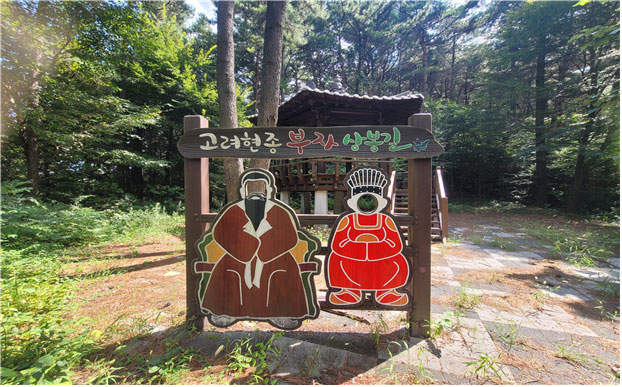
귀룡동의 명당은 여타의 명당과는 다른 여러 가지를 시사하고 있는데 첫 번째 논쟁거리가 즉시 발복(發福)이라는 점이다. 곧 묘지를 쓴지 십삼 년 만에 아들이 왕에 등극하였다는 점이다. 두 번째는 풍수지리에 밝았던 왕욱(王郁)은 이 자리의 빠른 발복을 위하여 자신을 거꾸로 묻었다는 점이다. 곧 흉지(凶地)에 묻어서 뒤집어진 무덤이 아니라 스스로 뒤집어 묻었던 무덤, 곧 복시혈(覆尸穴)이다. 과연 어떤 자리가 이렇게 거꾸로 묻어야만 발복하는 자리란 말인가? 전해오기로 하늘을 나는 매(鷹) 명당은 거꾸로 묻어야 발복한다고 했다. 왜냐하면 매가 사냥하기 위해서는 엎어진 자세가 필요하기 때문이다. 나아가 출생의 비밀에 있듯이 사통한 아들이 발복했다는 것이다. 우리나라 역대 왕들 중에 유일한 사생아이기도 하다. 곧 도덕률에 위배되는 무덤이라는 뜻이다. 나아가 무덤의 발복 후 21년 뒤인 서기 1017년 현종은 아버지의 무덤을 개성으로 옮겼다. 이 명당을 옮긴 것이 맞는 일일까? 명당 발복 후 묘지관리에 대한 관점의 문제이다. 현재 귀룡동 무덤은 터만 남아있다. 그리고 주변에는 많은 민묘가 들어서 있다. 모든 사람이 현종과 같이 똑같은 발복은 받고 있지 않아 보인다.
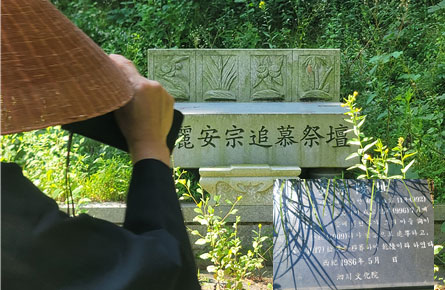
안종의 무덤 자리가 귀룡동(歸龍洞)이며 인근에 와룡산(臥龍 구 안종능지 표지석山)이 있고 구룡리(九龍里)가 있어서 범상치 않은 이름이 많다. 용,혈,사,수,향으로 살펴보면 그 기세가 등등하다. 더구나 북향을 이루고 있다. 왕욱은 용이 되어 왕순을 태우고 개성으로 돌아가는 꿈을 꾸고 이 자리에 묻히지 않았을까? 그가 꿈을 안고 엎어져서 기다린 십삼 년과 드디어 이십일 년 만에 자신도 용이 되어 개성으로 돌아가는 꿈이 이뤄진 것이다.
현종의 어머니 헌정왕후 황보씨가 미망인이 되어 사가에 있을 때 꿈을 꾸었다. 그 꿈이 남산에 올라 소변을 보는데 개성이 모두 잠겼다. 술사를 불러서 꿈풀이(解夢)를 물으니 말하기를 “아들을 낳으실 것이며 위해한 왕을 낳을 것입니다.”고 했다. 그러자 순정왕후 황보씨가 말하기를 “과부가 어찌 애를 낳는단 말이냐? 절대 그럴 일이 없을 것이다.”했다. 하지만 얼마 후 현종을 낳았던 것이다.
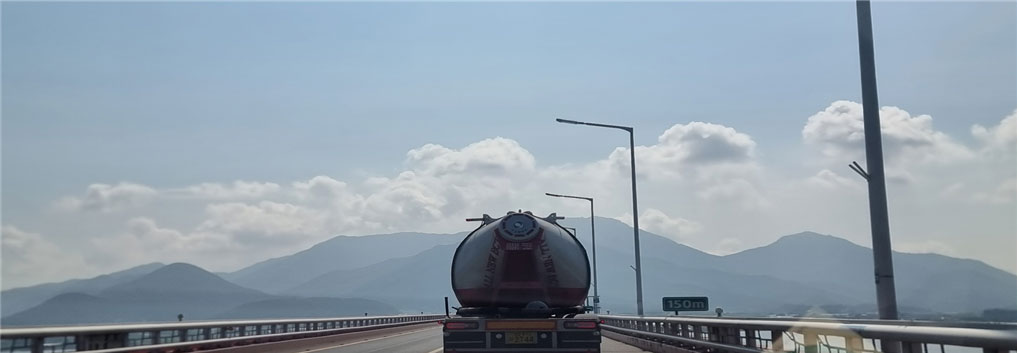
설산 최재은 소개
최 재은 (崔 宰銀)
경주인(慶州人) 용성부(龍城府) 남원태생(南原胎生)
호(號)는 설산(雪山), 원통산인(圓通山人-元通山人), 청사(靑蛇), 보림당주(寶林幢主), 백련주인(白蓮主人) 구봉산주(龜峰山主) 종남산인(終南山人) 등(等)
(현) 사단법인 환단사상연구소 소장 및 이사장.
(현) 환사련산하 열린행복우리학교 태학당주.
(현) 전북대학교 평생교육원 전담교수.
전북대학교 법과대학 학생회장 및 투쟁위원장을 역임 민주화 운동에 투신. 30세에 이르러 백우선인의 유지를 받들어 “동양사상연구소” “설산철학관”을 개소 개관하고 “바른 소리 옳은 소리 밝은 소리”기관지를 발간하여 역술인의 길을 걷기 시작함. 후학을 양성함과 아울러서 대한민국 휴전선 아래 국토를 돌면서 “제일강산 남조선 명당도”를 십년에 걸쳐서 제작함, 더불어서 동방삼교삼학의 요체인 역학을 정리 저술하기 시작하다. 무인년에 백두산 천지에 올라 일두삼족금오조(一頭三足金烏鳥)를 보았고 나아가 백두산의 뿜어내는 거대한 방광을 보았다. 그 방광이 화하여 백두산 삼신마고 할머니와 열여섯 동자로 변하는 것을 친견한 후 돌아와 (사단법인) 한단사상연구소를 창립하고 마침내 원통대방경(圓通大方經) 상(上)을 출간(出刊)하였다.
이후 (구)구봉초등학교를 인수하여 열린행복우리학교 태학당을 설립 개교하고 후학양성에 힘씀과 더불어서 대한민국 전국 명당 지도를 다시금 수정 보완하였다. 나아가 전북대학교 평생교육원을 비롯하여 여러 교육기관과 사회단체 등 강의 활동을 지속해 왔다. 더불어서 설산 풍수지리 강의집, 설산 주역 강의집 등 내부 및 외부 교재 수십 편을 집필하였다. 해마다 돌아오는 운세집(運勢集)을 펴냄과 더불어서 임진년 갑오년 백두산을 수 차례 다시 올랐다. 더불어서 丙申年에 중국 서안의 태백산 및 오악(五嶽-동태산 남형산 중숭산 서화산 북항산)을 모두 올랐으며 이를 토대로 하고 다시금 오십년의 연구와 공력으로 만복만덕(萬福萬德)의 후천개벽천하제일도(後天開闢天下第一圖)를 완성(完成)하였다. 그 결과를 하늘 소리 땅 노래인 천음지가(天音地歌)로 쓰기 시작해 마침내 2022년 임인년에 "명당의 원리 발복의 비빌“1권과 2권를 출간(出刊)하였다. 나아가 천음지가의 후속 권을 집필 중이며 나아가 천문 지리 인사의 다방면의 책을 집필 중이다. 원통대방경의 핵심인 선천문창후천부경을 후천도에 맞추어 마침내 후천설산천부경으로 거듭 정립하고 일오칠묘도수(一五七妙度數)를 만천하에 밝혔다.
주요저서 원통대방경(上), 명당의 원리 발복의 비밀1, 명당의 원리 발복의 비밀2, 내외 교육교재 및 강의집-설산 풍수지리 강의집, 설산 주역 강의집, “바른 소리 옳은 소리 밝은 소리”, “대원정각천지회통”, “자미두수도표”, “설산자미두수해제” “봉선”, “하늘소리 땅노래(天音地歌)”, “백두산여정기” “태산노정기” “태백산노정기” “후천개벽의 수도로 점지된 왼태극의 땅 전라도 전주”외 각 고을지 및 2017년 이후 17년간 매년운세집정리책자 등(等)을 출간 및 책자화하였고 후속 작업을 위해 .교육 및 집필 중.
여수 MBC방송 출연
티브로드 신년대담프로 출연
라디오교통방송 꿈풀이 상담등 여러방송매체에 출연.
사단법인환단사상연구소 열린행복우리학교
063)243-7246 010-3655-7252
[Column by Seol San Choi Jae-eun]
A road has been constructed from Nenghwa Village in Sanam-myeon, Sacheon-si, Gyeongsangnam-do to Baebangsa Temple, continuing on to the "Buja Sangbong Road" of Goryeo Hyeonjong. Nenghwa Village is the place where Goryeo Hyeonjong's father, Wang Wook, was exiled.
Wang Wook is the eighth son of Goryeo Taejo Wang Geon. However, Wang Wook, the seventh son, had a son named Sun through a secret relationship with Queen Heonjeong, the widow of the fifth king, King Gyeongjong. Thus, Wang Sun was a posthumous child. His mother, Queen Heonjeong Hwangbo, gave birth to her son and passed away immediately. Due to the fact of the secret relationship, Wang Sun was exiled to the distant land of Sacheon before he was even born.
Upon seeing the innocent face of his son, Wang couldn't bear to kill him and sent him to Baebangsa in Sacheon, his father's place of exile. Wang Wook traveled over 20 li from Nenghwa Village to Baebangsa in the morning and returned by evening to see his son, who he named Gujabong, meaning the peak where the son looks back at the father.
Wang Wook was exiled in 992, the same year Wang Sun was born. Later, Wang Wook made a significant decision. Feeling that the land of Guryongdong was his auspicious place, he left a will to be buried there and took his own life. He requested to be buried upside down, and 13 years later, in 1009, his wish was fulfilled when his son Wang Sun ascended to the throne as the eighth king of Goryeo, known as Hyeonjong. He was praised as a king who not only led the country to victory in wars against the Khitan but also reformed the country's institutions, laying the foundation for prosperity that even the historians couldn't criticize.
Afterward, Wang Sun honored his father as Anjong and moved the burial site of Guryongdong to Gae-seong, calling it Geonreung. Through the reversal of Wang Wook's burial at Guryongdong, his son became king, overcame national crises, and turned Goryeo into a powerful nation. The descendants of Anjong and Hyeonjong continued to reign as kings, leading Goryeo to a period of prosperity and peace for 130 years, up to the 17th king, Injong, truly a remarkable reversal of fortune for the royal family.
The auspiciousness of Guryongdong's burial site indicates several unique aspects. Firstly, the immediate rise to power after the burial is a point of contention. Secondly, Wang Wook, who was knowledgeable in geomancy, buried himself upside down to ensure a swift rise to power. Such a tomb, known as a reversed burial mound or "Boksihyeol," is not buried in an inauspicious location but is a tomb that is intentionally reversed. It is said that a place where an eagle, a bird that soars in the sky, must be buried upside down to bring good fortune. This signifies that Wang Sun, a posthumous child born from a secret relationship, rose to power. He was the only posthumous child among the kings of Korea, which goes against moral principles. Furthermore, 21 years after the reversal of the tomb, in 1017, Hyeonjong moved his father's tomb to Gae-seong. Was it appropriate to move this auspicious burial site? This raises questions about the management of tombs after an auspicious event. Currently, only the site of Guryongdong's tomb remains, surrounded by many common graves. It seems that not everyone is receiving the same auspiciousness as Hyeonjong.
The tomb of Anjong is located at Guryongdong, with nearby places like Warungsan and Guryong-ri, which have unusual names such as Yong, Hyeol, Sa, Su, and Hyang, indicating a majestic atmosphere. Moreover, it is oriented towards the north. Did Wang Wook dream of becoming a dragon, carrying Wang Sun and returning to Gae-seong? Did he dream of being buried in this place? After waiting for thirteen years with his dream, he finally became a dragon himself and returned to Gae-seong after twenty-one years.
When Queen Heonjeong Hwangbo was a widow and living in Saka, she had a dream. In her dream, she climbed Mount Nam-san and saw that all the gates of Gae-seong were closed. She consulted a shaman to interpret her dream, and the shaman said, "You will give birth to a son, and he will become a king." However, Queen Sunjeong Hwangbo replied, "How can a widow give birth to a child? It will never happen." Yet, she later gave birth to Hyeonjong.
Introduction of Seol San Choi Jae-eun
Choi Jae-eun
Born in Namwon, Yongseong-bu, Gyeongju
Pen names: Seol San, Wontongsan-in, Cheongsa, Boryeomdangju, Baekryeonjuin, Gubongsanju, Jongnamsan-in, etc.
Current positions:
Director and chairman of the Hwandan Philosophy Research Institute (current)
Chairman of the Hwandan Mountain Happiness Our School (current)
Dedicated professor at the Lifelong Education Institute of Jeonbuk University (current)
He served as the president and chief of the struggle committee of the Law School Student Council at Jeonbuk University, dedicating himself to the democratization movement. At the age of 30, he received the support of the Baekwoo Seonin and founded the "Eastern Philosophy Research Institute" and opened the "Seolsan Philosophy Hall," publishing the magazine "Barun Sori Ojeun Sori Balgeun Sori" and embarking on the path of a fortune teller. Over a decade, he created the "Jaeil Gangsan South Korea Mingdangdo," and further organized and supplemented the national Mingdang map, revising it. Furthermore, he began to organize and write about the principles of Eastern geomancy, which are the essence of the three teachings of the East, over the years. In the year of the Year of the Dog, he climbed Baekdusan and saw the Golden Crow with three legs, and further witnessed the huge bladder emitted by Baekdusan. After witnessing the bladder transforming into the angry grandmother and sixteen grandchildren of Baekdusan, he returned and founded the Hwandan Philosophy Research Institute and finally published the "Wontong Great Compassion Sutra" (Volume 1).
Subsequently, he acquired the former Gubong Elementary School and established the Hwandan Happiness Our School Taehakdang, focusing on nurturing future generations and revising and supplementing the national Mingdang map. Furthermore, he has been actively engaged in lecture activities at various educational institutions and social organizations, including the Lifelong Education Institute at Jeonbuk University. He has authored numerous internal and external textbooks, including lectures on Seolsan geomancy and main actors, and has published dozens of books. He publishes an annual fortune-telling book and has climbed Baekdusan several times in the years of Imjin and Gapo. In the year of Bingshin, he climbed all the Five Mountains of China's Western An, including Taebaeksan and Oaek, and based on this, after fifty years of research and effort, he completed the "Ten Thousand Blessings and Virtues, the First Map of the World's Creation" (Hochon Kaebyeok Cheonha Jeildo). He began to write this result as the "Heavenly Sound and Earth Song" (Cheonyeomjiga).
Following this, in the year of Imjin, he published "The Secret of the Principles of Mingdang and the Reversal of Fortune" (Volumes 1 and 2). He is currently working on the sequel to Cheonyeomjiga and is also writing various books on celestial geography and human affairs. He has finally established the post-heaven Seolsan Cheonbugyeong as a guide to the post-heaven, based on the core of the pre-heaven text, and has revealed the One-Five-Seven Mysterious Degree to the world.
Major works: Wontong Great Compassion Sutra (Volume 1), The Secret of the Principles of Mingdang and the Reversal of Fortune (Volumes 1 and 2), internal and external educational textbooks and lecture books - Seolsan geomancy lecture book, Seolsan main actor lecture book, "Barun Sori Ojeun Sori Balgeun Sori," "Daewonjeonggak Cheonjihoetong," "Jamidusudo," "Seolsan Jamidusuhaje," "Bongseon," "Heavenly Sound and Earth Song," "Baekdusan Yejeonggi," "Taesan Nojeonggi," "Taebaeksan Nojeonggi," "The Land of Jeonju, the Left Taeguk, Pointed out by the Post-Heaven's Opening of the Land of Jeolla Province Jeonju," and various guidebooks and annual fortune-telling books published since 2017. He is currently engaged in education and writing for future works.
Appeared on Yeosu MBC broadcast
Appeared on TV broadcast New Year's Dialogue Program
Appeared on radio traffic broadcast for dream interpretation counseling and other broadcasting media.
Hwandan Philosophy Research Institute, Hwandan Happiness Our School
063-243-7246 010-3655-7252

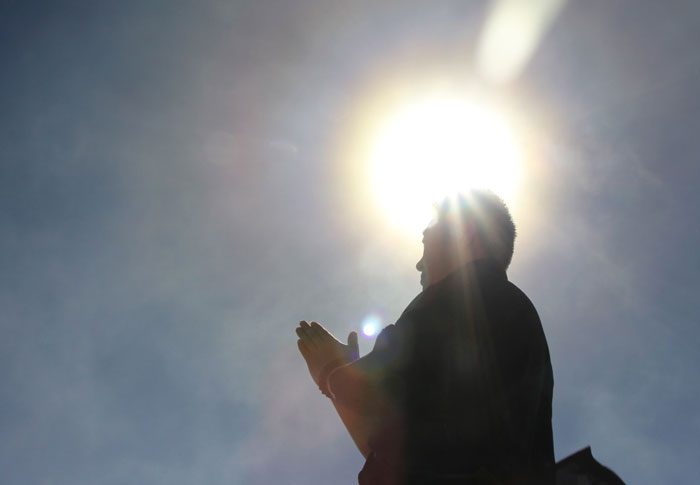
 왕욱(王郁)은 고려태조 왕건의 여덟 번째 아들이다. 그런데 일곱째 아들 왕욱(王旭)의 딸이자 제5대 경종(景宗)의 미망인 헌정왕후와 사통하여 아들 순(詢)을 낳았다. 그러하니 왕순(王詢)은 사생아였다. 어머니 헌정왕후 황보씨는 아들을 낳고 바로 죽고 말았다. 아버지는 사통한 사실로 인하여 왕순이 태아나기도 전에 머나먼 사천 땅으로 유배를 왔던 것이다.
왕욱(王郁)은 고려태조 왕건의 여덟 번째 아들이다. 그런데 일곱째 아들 왕욱(王旭)의 딸이자 제5대 경종(景宗)의 미망인 헌정왕후와 사통하여 아들 순(詢)을 낳았다. 그러하니 왕순(王詢)은 사생아였다. 어머니 헌정왕후 황보씨는 아들을 낳고 바로 죽고 말았다. 아버지는 사통한 사실로 인하여 왕순이 태아나기도 전에 머나먼 사천 땅으로 유배를 왔던 것이다.
 귀룡동의 명당은 여타의 명당과는 다른 여러 가지를 시사하고 있는데 첫 번째 논쟁거리가 즉시 발복(發福)이라는 점이다. 곧 묘지를 쓴지 십삼 년 만에 아들이 왕에 등극하였다는 점이다. 두 번째는 풍수지리에 밝았던 왕욱(王郁)은 이 자리의 빠른 발복을 위하여 자신을 거꾸로 묻었다는 점이다. 곧 흉지(凶地)에 묻어서 뒤집어진 무덤이 아니라 스스로 뒤집어 묻었던 무덤, 곧 복시혈(覆尸穴)이다. 과연 어떤 자리가 이렇게 거꾸로 묻어야만 발복하는 자리란 말인가? 전해오기로 하늘을 나는 매(鷹) 명당은 거꾸로 묻어야 발복한다고 했다. 왜냐하면 매가 사냥하기 위해서는 엎어진 자세가 필요하기 때문이다. 나아가 출생의 비밀에 있듯이 사통한 아들이 발복했다는 것이다. 우리나라 역대 왕들 중에 유일한 사생아이기도 하다. 곧 도덕률에 위배되는 무덤이라는 뜻이다. 나아가 무덤의 발복 후 21년 뒤인 서기 1017년 현종은 아버지의 무덤을 개성으로 옮겼다. 이 명당을 옮긴 것이 맞는 일일까? 명당 발복 후 묘지관리에 대한 관점의 문제이다. 현재 귀룡동 무덤은 터만 남아있다. 그리고 주변에는 많은 민묘가 들어서 있다. 모든 사람이 현종과 같이 똑같은 발복은 받고 있지 않아 보인다.
귀룡동의 명당은 여타의 명당과는 다른 여러 가지를 시사하고 있는데 첫 번째 논쟁거리가 즉시 발복(發福)이라는 점이다. 곧 묘지를 쓴지 십삼 년 만에 아들이 왕에 등극하였다는 점이다. 두 번째는 풍수지리에 밝았던 왕욱(王郁)은 이 자리의 빠른 발복을 위하여 자신을 거꾸로 묻었다는 점이다. 곧 흉지(凶地)에 묻어서 뒤집어진 무덤이 아니라 스스로 뒤집어 묻었던 무덤, 곧 복시혈(覆尸穴)이다. 과연 어떤 자리가 이렇게 거꾸로 묻어야만 발복하는 자리란 말인가? 전해오기로 하늘을 나는 매(鷹) 명당은 거꾸로 묻어야 발복한다고 했다. 왜냐하면 매가 사냥하기 위해서는 엎어진 자세가 필요하기 때문이다. 나아가 출생의 비밀에 있듯이 사통한 아들이 발복했다는 것이다. 우리나라 역대 왕들 중에 유일한 사생아이기도 하다. 곧 도덕률에 위배되는 무덤이라는 뜻이다. 나아가 무덤의 발복 후 21년 뒤인 서기 1017년 현종은 아버지의 무덤을 개성으로 옮겼다. 이 명당을 옮긴 것이 맞는 일일까? 명당 발복 후 묘지관리에 대한 관점의 문제이다. 현재 귀룡동 무덤은 터만 남아있다. 그리고 주변에는 많은 민묘가 들어서 있다. 모든 사람이 현종과 같이 똑같은 발복은 받고 있지 않아 보인다. 안종의 무덤 자리가 귀룡동(歸龍洞)이며 인근에 와룡산(臥龍 구 안종능지 표지석山)이 있고 구룡리(九龍里)가 있어서 범상치 않은 이름이 많다. 용,혈,사,수,향으로 살펴보면 그 기세가 등등하다. 더구나 북향을 이루고 있다. 왕욱은 용이 되어 왕순을 태우고 개성으로 돌아가는 꿈을 꾸고 이 자리에 묻히지 않았을까? 그가 꿈을 안고 엎어져서 기다린 십삼 년과 드디어 이십일 년 만에 자신도 용이 되어 개성으로 돌아가는 꿈이 이뤄진 것이다.
안종의 무덤 자리가 귀룡동(歸龍洞)이며 인근에 와룡산(臥龍 구 안종능지 표지석山)이 있고 구룡리(九龍里)가 있어서 범상치 않은 이름이 많다. 용,혈,사,수,향으로 살펴보면 그 기세가 등등하다. 더구나 북향을 이루고 있다. 왕욱은 용이 되어 왕순을 태우고 개성으로 돌아가는 꿈을 꾸고 이 자리에 묻히지 않았을까? 그가 꿈을 안고 엎어져서 기다린 십삼 년과 드디어 이십일 년 만에 자신도 용이 되어 개성으로 돌아가는 꿈이 이뤄진 것이다. 
